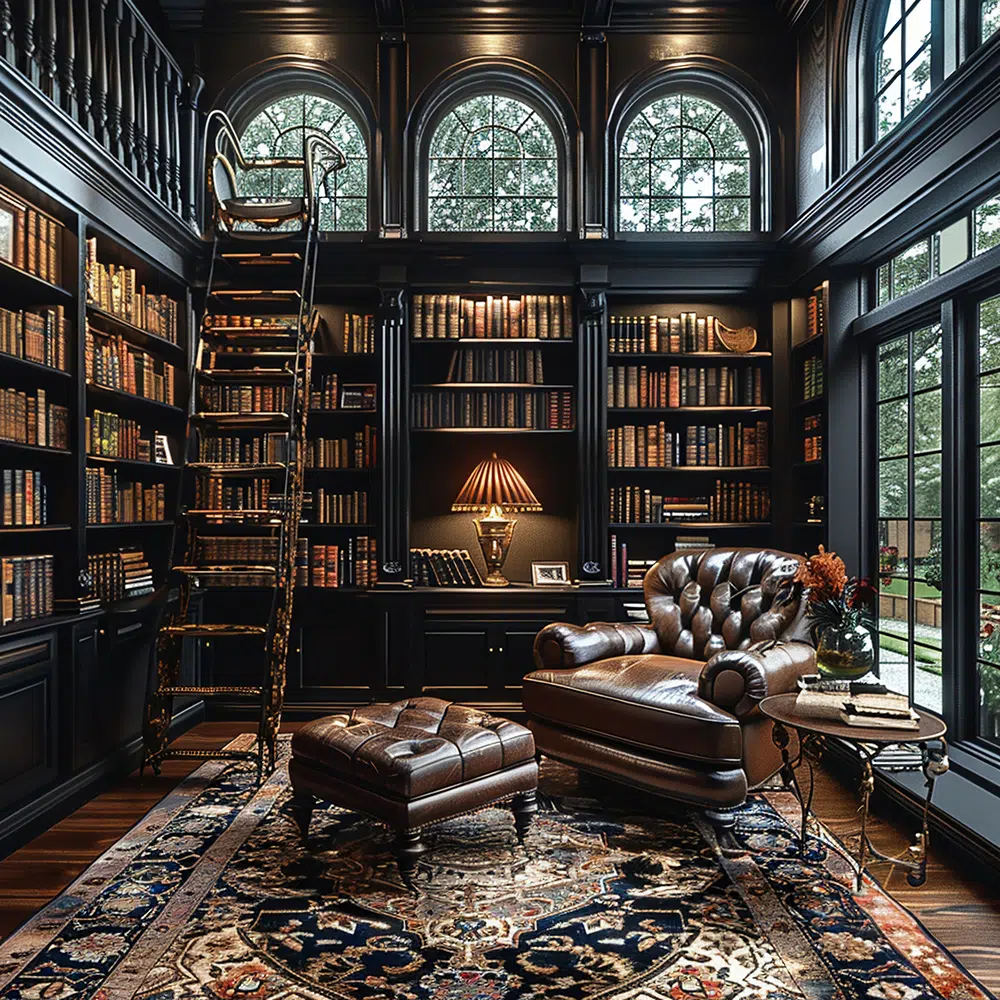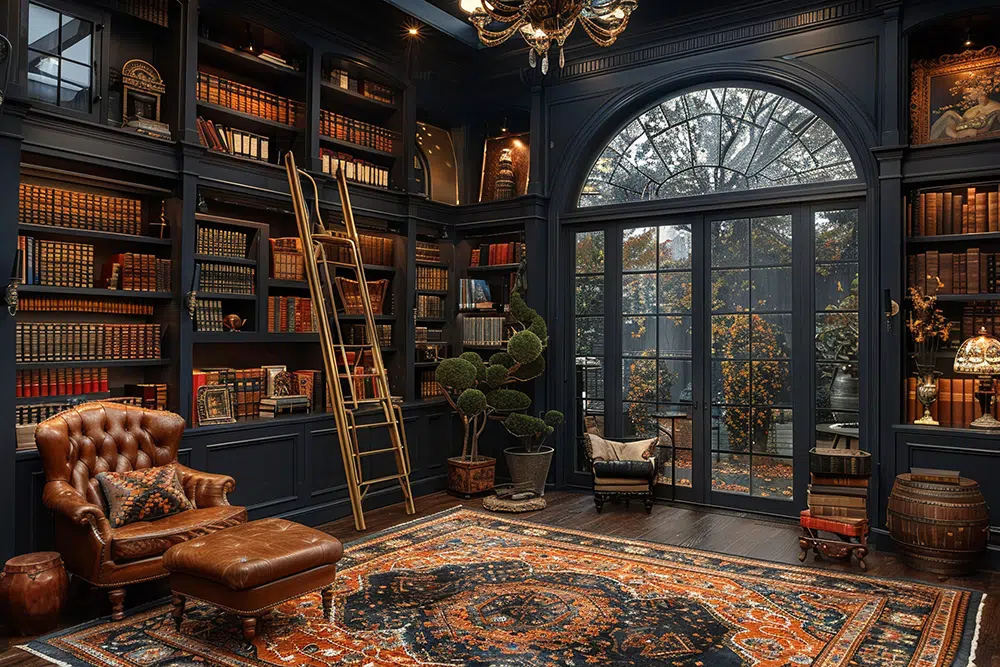Luxury living evolves, yet some traditions never lose their power. The home library is one of them. Far from being a relic of another century, the modern library is a renewed symbol of elegance and intellect. It represents not only a love of books but also an appreciation for thoughtful design and personal curation. In a world dominated by screens, the presence of a room dedicated to reading feels like the ultimate indulgence.
The Return of the Home Library
Libraries once stood as markers of status, with shelves displaying bound volumes as evidence of refinement. Today, their appeal lies less in symbolism and more in the experience they create. A private library can be a sanctuary, giving you a quiet retreat from the distractions of digital life. It becomes a place of reflection, learning, and calm.
In high-end homes, the library has shifted from being purely functional to being deeply personal. Each artifact and finish tells a story. A library is no longer a room you simply walk past. It is a room that’s designed to be lived in.
Materials That Speak to Legacy
Luxury design often finds its strength in materiality. Consider hardwoods such as walnut, oak, or mahogany. Each offers warmth and character that matures over time. Marble fireplace surrounds or stone inlays can add gravitas, while brass fixtures or leather-bound detailing introduce richness. These choices are not about excess but about selecting elements that will age with dignity.
Lighting should be treated with equal care. Softly recessed fixtures or carefully placed sconces make reading practical without sacrificing mood. In daylight, tall windows filtered with linen drapes can provide an ever-changing quality of light, making the library feel alive throughout the day.
Designing for Atmosphere
When you step into a library, the goal is to feel transported. Because of this, proportion and scale are important considerations. Your ceiling height matters because it creates grandeur, but intimacy can be just as powerful in smaller spaces with the right details. Design details like built-in shelving or hidden niches can give your room both function and a sense of intrigue.
Furniture anchors the mood. A tufted armchair signals tradition, while a sleek chaise introduces a modern edge. The sofa is often the centerpiece, chosen as much for comfort as for visual effect. A carefully chosen white sofa can give your room some interesting contrast to any darker finishes and create a gallery-like sense of openness. White in this context reads not as plain but as daring, highlighting clarity and confidence.
The Role of Personal Curation
A true luxury library is not defined by the number of books but by the meaning behind them. First editions, travel journals, art monographs, and even well-worn novels form a tapestry of personal history. Displaying these works elevates the room beyond interior design. It becomes an autobiography expressed through literature.
Decorative objects add another dimension. Sculptural pieces, ceramics, or framed artwork act as interludes between shelves of text. The result is layered storytelling, each item carefully chosen for resonance rather than ornament.
Comfort as an Extension of Luxury
A library should be more than a visual statement. It should be a space where you want to linger. Deep cushions, adjustable lighting, and thoughtful acoustics encourage longer stays. This is where luxury proves its value: not in formality but in the lived experience.
Imagine settling into a generous sofa with a rare book, the lighting low and the atmosphere quiet. This combination of comfort and contemplation is what makes a library feel indulgent. Luxury here is not loud. It is subtle, nurturing, and deeply personal.
Technology and Tradition in Balance
Libraries are rooted in history, but nowadays a modern library often incorporates discreet technology. This not only improves your overall comfort and experience, but can also protect items within the library. For example, climate control is often used to protect rare collections, and automated blinds can manage light exposure. Integrated audio systems may be used to provide background music or spoken word recordings. The best designs conceal these features so that the room retains its timeless quality while serving modern needs.
The balance between tradition and innovation ensures that the library feels relevant. It is neither a museum piece nor an overly futuristic space. Instead, it bridges eras, much like the books that span centuries on its shelves.
White as a Statement of Modern Elegance
In luxury interiors, color carries as much meaning as material. While dark woods and rich tones dominate many traditional libraries, introducing white elements can completely transform the experience. A white sofa, when placed against darker surroundings, radiates calm. It acts as a counterbalance, softening the intensity of shelves and paneling.
White also conveys modernity. It introduces light, reflecting rather than absorbing, and makes the room feel larger and more open. For homeowners seeking a library that feels both classic and fresh, this choice achieves harmony without compromising sophistication.
Sustainability and the Future of Design
Luxury is increasingly defined by responsibility. A library crafted with sustainable woods, energy-efficient lighting, and long-lasting upholstery communicates awareness alongside wealth. Pieces designed for durability reduce the need for replacement, allowing the room to maintain its integrity over decades.
Sustainability also enhances legacy. Just as books are preserved for future generations, so too should the environment be considered in the creation of luxury spaces. Designing responsibly ensures that the beauty of a library is not achieved at the expense of the planet.
A Personal Sanctuary
The appeal of the home library is ultimately emotional. It offers a pause in a world of constant motion. It invites presence, encourages thought, and fosters appreciation of both content and craft. Luxury is not measured solely in price but in the depth of experience.
For some, a library is a retreat at the end of the day. For others, it is a place to host intimate gatherings or share rare finds. In all cases, it becomes a sanctuary that reflects the values of its owner.
FAQs
- Why are home libraries regaining popularity?
They provide sanctuary in a fast-paced world, combining tradition with modern luxury.
- How important is material choice in a library?
Extremely. Materials like hardwood and marble add longevity and richness, making the room feel timeless.
- Can white furniture work in a library?
Yes. White offers contrast, light, and modern appeal, especially when paired with darker architectural finishes.
- Do libraries need to be large?
No. Intimacy can be as powerful as grandeur. Even smaller rooms can be transformed into meaningful libraries.
- How can technology enhance a library without overwhelming it?
Discreet integration, such as automated blinds and hidden climate systems, maintains tradition while adding modern comfort.
- Is sustainability compatible with luxury?
Absolutely. Using renewable materials and durable furniture ensures that a library is both elegant and responsible.






